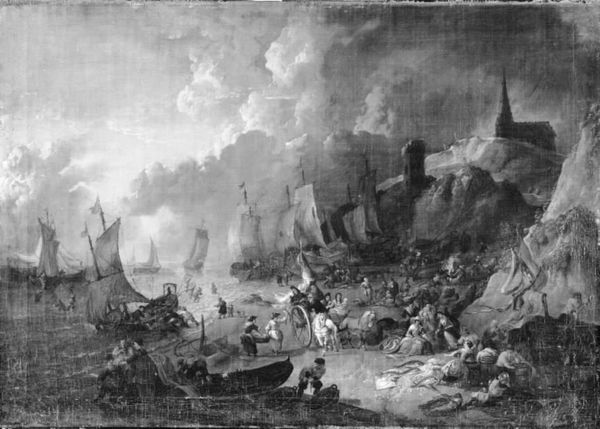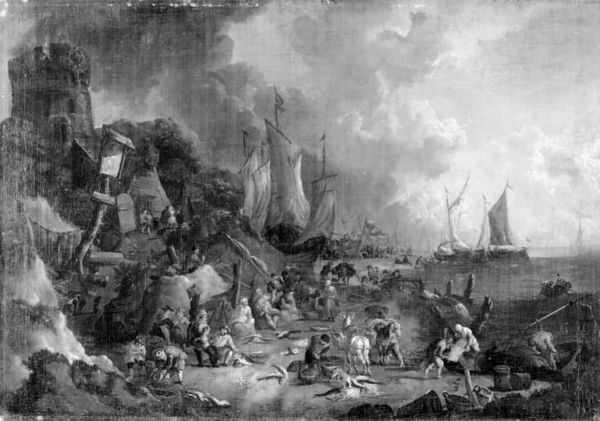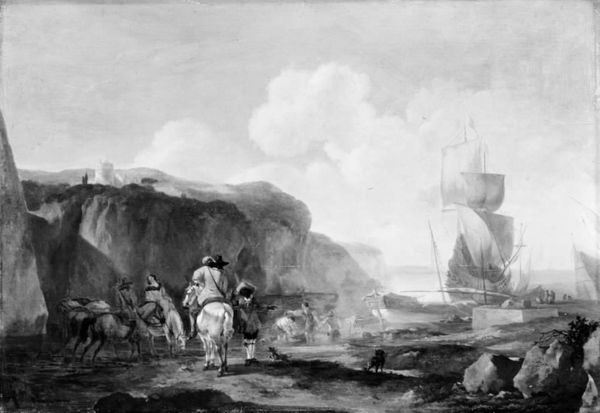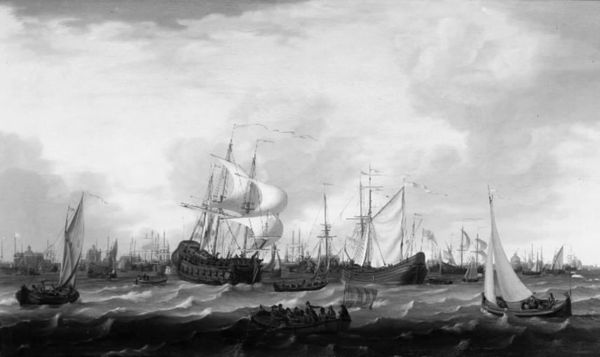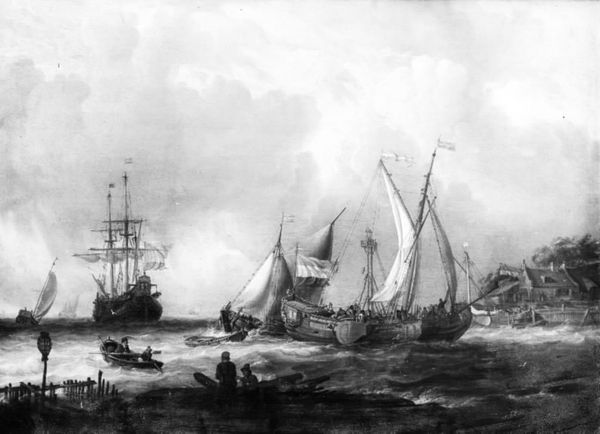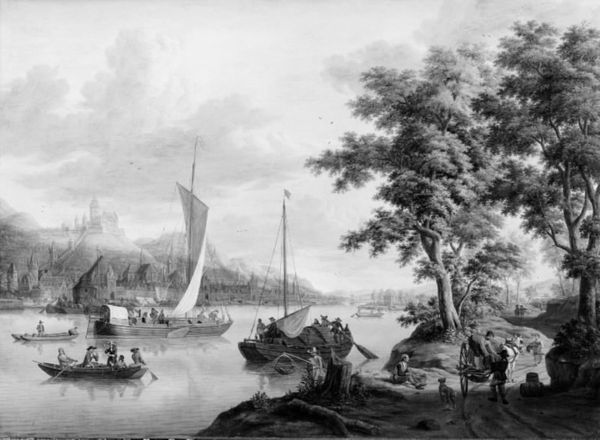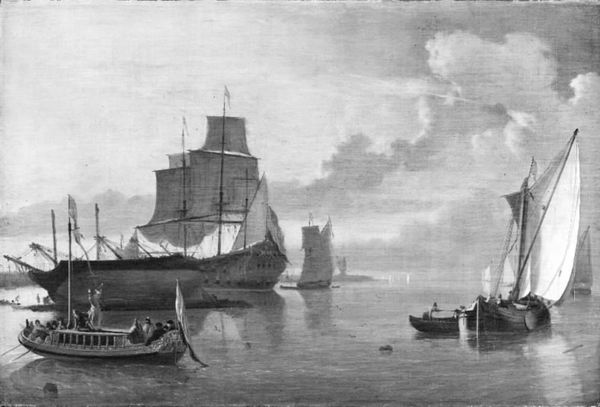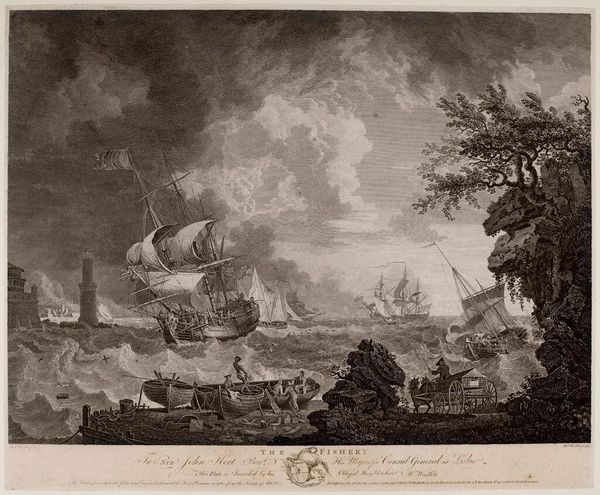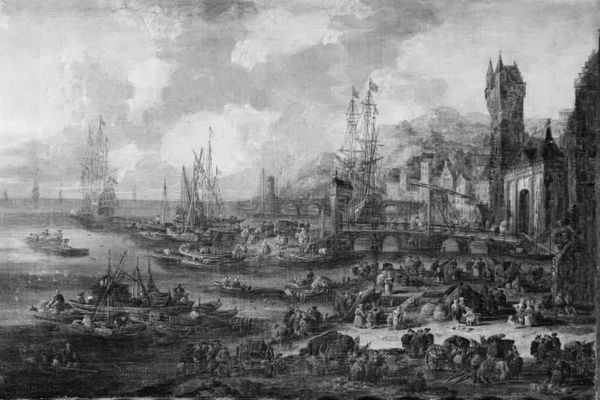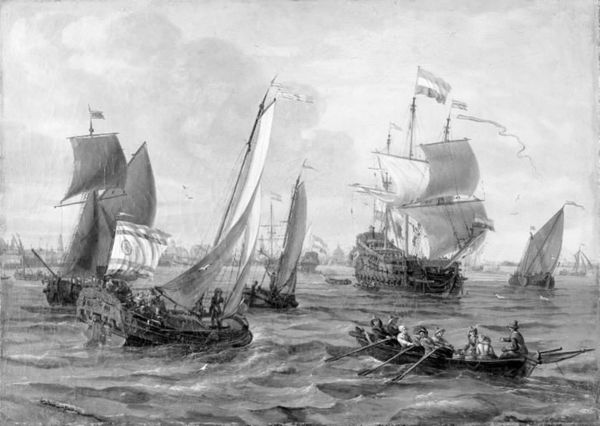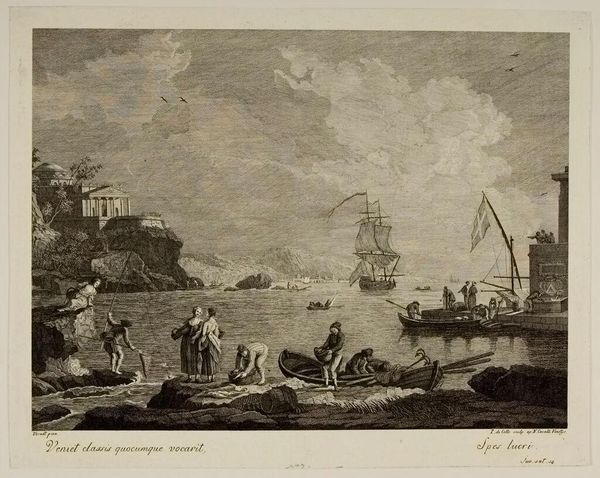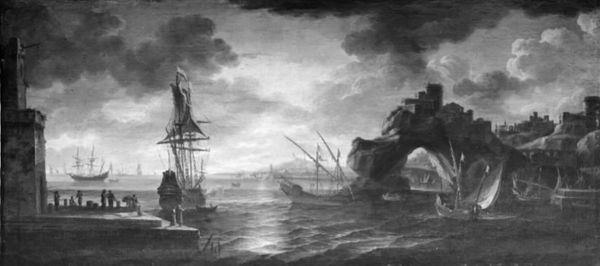
painting, canvas
#
painting
#
landscape
#
figuration
#
canvas
#
black and white
#
history-painting
#
monochrome
#
monochrome
Dimensions: 68.5 cm (height) x 84.5 cm (width) (Netto)
Curator: Here we have an artwork entitled "Seascape with Ships, a Forest and a Tower," crafted in 1848 by an anonymous artist. It is rendered in monochrome, using oil paint on canvas. What are your initial thoughts? Editor: Immediately, I notice the composition. There’s this interesting balance between the meticulously detailed foreground with the figures and the tower, versus the hazy, almost dreamlike quality of the sea and sky in the background. It evokes a sense of being on the threshold of something. Curator: I’m drawn to the textures. Notice how the artist meticulously layers paint to define the rough, weathered surface of the tower, contrasting sharply with the smoother rendering of the sails on the distant ships. What materials were locally available and the labor involved in acquiring them at this time? The logistics behind creating this scene interest me most. Editor: Absolutely. And thinking about context, what power dynamics are at play here? These ships on the water represent so much about trade, colonialism, the movement of people, willing or unwilling, and exploitation of resources. We see people on the shore, in what appear to be subjugated roles in labor or movement; these black and white tones obscure that, removing race and social hierarchy while paradoxically bringing it into sharp focus. Curator: Agreed, the use of monochrome seems to neutralize any specific narrative, prompting questions regarding the painting’s function: what narratives, traditions, or even economic exchanges did the artist hope to conjure for the canvas itself, the paint, or the ships? What resources did these things cost to procure? Editor: Exactly. Was the artist seeking a broader meditation on historical themes or simply portraying an idealized moment in time that served a political message, or both? The details—the clothing, the architecture—point to specific cultural encounters and the legacy of interactions of vastly different scales of people traveling by water and land. We need to also see where the work has been exhibited. To whom was it presented and when, how and by whom has this been maintained? These questions shape how we understand the work. Curator: I appreciate your perspective. Seeing it through this particular lens reveals so much. Thank you! Editor: Thanks to your highlighting material processes, my social and political analysis can land on very real economic struggles!
Comments
No comments
Be the first to comment and join the conversation on the ultimate creative platform.
